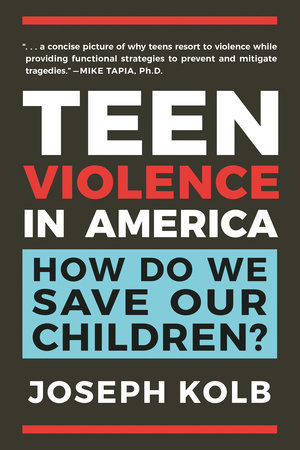Excerpt
Teen Violence in America
The purpose of the book is two-fold. First, to identify those circumstances that can place a child at risk for violent behavior, and learn what ignites this predilection towards violent action; and second, to explore strategies that can be employed to mitigate the damage and put them on a positive life track. This is not an easy task. While there is a plethora of gurus who claim to have the magical elixir to “fix” a violent child, the fact is there is not one single element that can work. Strategies must take a holistic approach, one which involves parents, domestic, educational, and social environments, proper access to resources, and support mechanisms to help keep the juvenile on track to being law-abiding and productive.
This includes, but is not limited to, completing an educational track that will make these children employable. While many parents and school officials attempt to push students towards college, this may only serve to set the student up for more pressure and unrealistic expectations. The reality is that college is not a panacea for all social ills, nor is it a guarantee of future prospects. Then there are the troubled students who get labeled and are forgotten altogether, left to fall through the cracks. There are many high-paying trades that at-risk students deserve the option and tools to explore. In fact, many union-type trade skills pay better than what a typical college graduate will ever make. Employment guidance and resources are still key to demonstrating to the individual that there is hope for the future—hope for a “normal” life, and that they can break out of whatever dysfunctional domestic circumstances have contributed to their at-risk state.
This book is not a step-by-step cookbook. There are always unknown variables that can contribute to violent behavior which require the reader to avoid pigeonholing a child under a suspected causative factor. This establishes the need for attempting those strategies which are most appropriate, which in turn makes the inclusion of the juvenile in the reform process absolutely crucial. They need to be given the opportunity to not only buy in but control their own destiny. It must be remembered that many of these teens are street smart beyond the capabilities of those new to working with at-risk youth. They are shrewd and can be manipulative. They are also part of sub-cultures—such as gangs—which are steeped in respect. Despite the thousands of well-trained and intentioned teachers adept at managing disruptive students, we often see a failure by many educators to grasp these facts due to a lack of foreknowledge and appreciation.
* * *
We must take a full and unapologetic look at every factor which contributes to the sort of moral bankruptcy needed before a teenager decides to pick up a gun and shoot another person in the face before nonchalantly walking away. If we are seriously intent on protecting our children, we need to look at the entire child and what their real needs are.
It is my hope this book’s overview of the complexity of youth violence will add to the conversation and help develop new strategies for mitigating teen violence. But before we can begin trying to solve the problem, we must cultivate a better understanding of just how bad things have gotten over the last fifty years.
—Excerpt from the Introduction by Joseph Kolb




